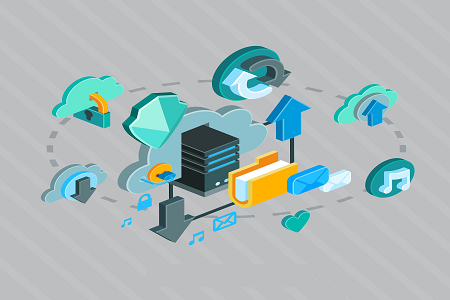Salient IT Services › Data Backup Folsom
What you need to know about data backup in Folsom
Data backups are or should be, a standard part of your everyday IT management. The concept is simple but they benefit from proper management, especially if you’re working in the cloud. With that in mind, here is a quick guide to what you need to know about data backup in Folsom.
Data backups are very different from data archive
A data backup is a snapshot of your data at a specific point in time. It is taken so you can restore the data if you lose it or it is corrupted. A data archive is a digital deep freeze where you can store specific data that may be needed rather than necessarily wanted.
In the days when storage was on physical media, this distinction could become rather blurry. Sometimes it was overlooked, sometimes it was remembered purely as a matter of organization. These days, however, understanding the difference is crucial to managing costs.
In short, if you continually backup data that really should be archived, you will pay additional charges for bandwidth and storage. The bandwidth charges will relate to the fact that you will be transporting data you don’t actively need and the storage charges will relate to the fact that the storage you will need for data backups (which might be required at any time) will be faster, and hence more expensive, than the storage you need for archiving.
Good data governance helps to keep reduce time and costs
In the very early days of IT, storage was expensive, so organizations were careful about what they kept. As IT went mainstream, storage became much more affordable and many organizations developed the habit of keeping data, just because it seemed safer than deleting it.
Now, organizations have to be much more mindful about how they manage sensitive data (including data from their own employees). They can, however, still take a relaxed approach to keeping general data and they may have accumulated a pile of “legacy” data, which nobody seems to want but nobody is prepared to delete.
If that sounds familiar, then one approach is to run a check to identify data that is being actively used versus data that appears to be lying dormant. Ask your management team if anyone is willing to claim the latter. If nobody puts up their hand, put the data into an archive and see if anyone complains. If they do it can be retrieved, if they don’t, you can wait until any relevant compliance deadlines expire and just delete it. Obviously, going forward, you want to apply solid data governance to your general data as well as to your sensitive data.

most of the time data backups will be used toThree copies of data is still a good rule of thumb
The 3-2-1 adage is still a good one for most companies to follow. That’s three copies of your data (including your production data) over two different media with one copy held offsite. The good news is that your third, off-site copy can now be to a (second) cloud, thus saving you the hassle of transporting tapes to a storage facility (and potentially having to transport them back again). It does, however, put the onus on you to minimize your bandwidth usage (and hence cost) as much as you reasonably can. There are two main ways of doing this.
Firstly you can use compression. You need to be slightly careful here as data that is overly compressed can be hard to recover, this is particularly true of images. Used in moderation, however, it can be a helpful way of keeping costs down.
Secondly, you can intersperse full data backups with incremental and/or differential backups. As the name suggests, full data backups back up all data. Incremental data backups only back up data which has changed since the last backup and differential backups only back up data which has changed since the last full backup.
Choosing between incremental and differential backups basically depends on whether your priority is saving resources in the short term or minimizing your time to restoration. In short, incremental backups are quicker to perform, but it can be a pain to restore from them. Differential backups take longer to perform, but they generally make for hassle-free restores.
Data should be encrypted before it is stored
Even if you’re working in a private cloud (or a data center or backing up to tape), it’s a good idea to encrypt your data before you store it. If you’re backing up sensitive data to a public cloud then you absolutely must encrypt it on your own servers and keep it encrypted until it is either used or deleted.
If you’d like to speak to a reputable and experienced data backup provider in Folsom, please clickherenow to contact Salient IT.



